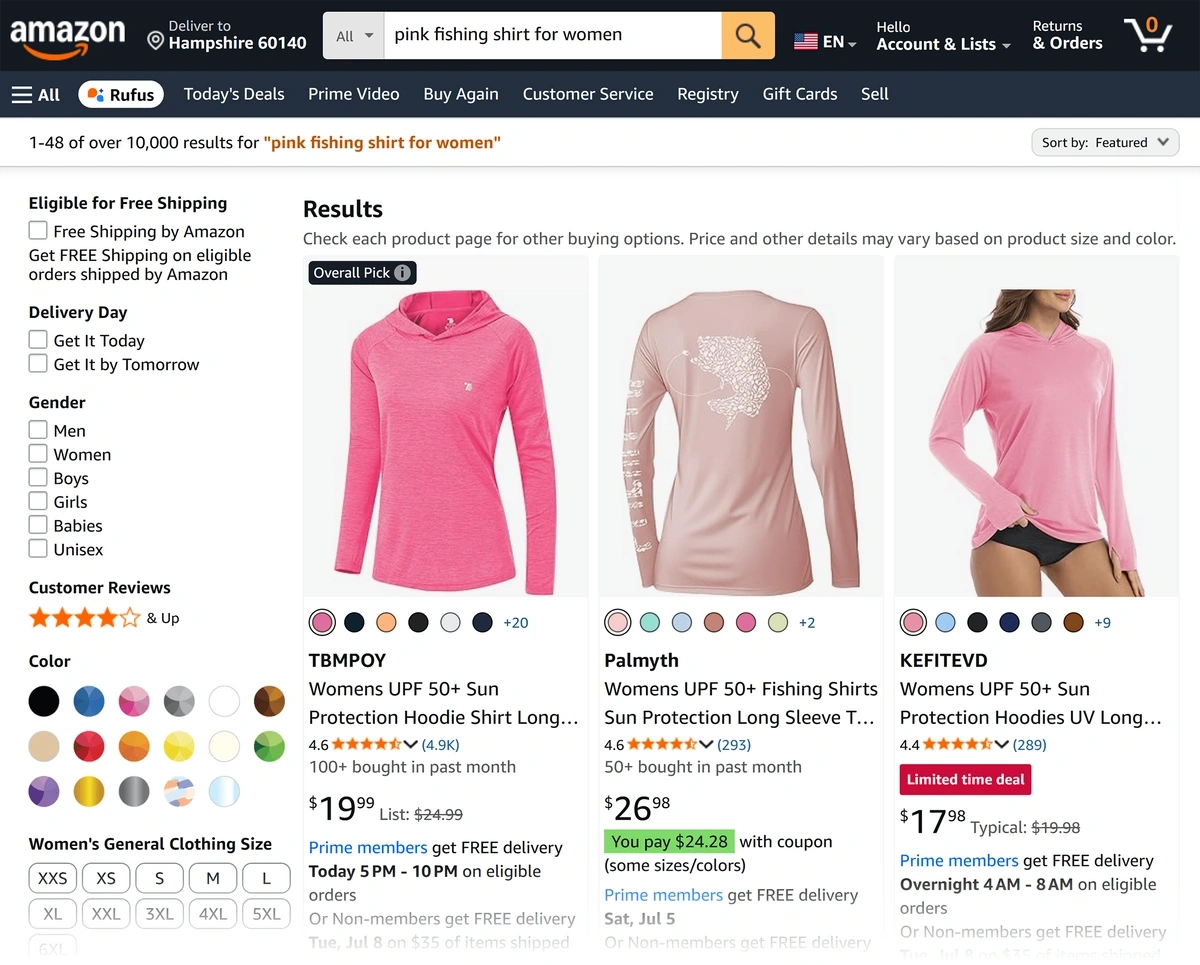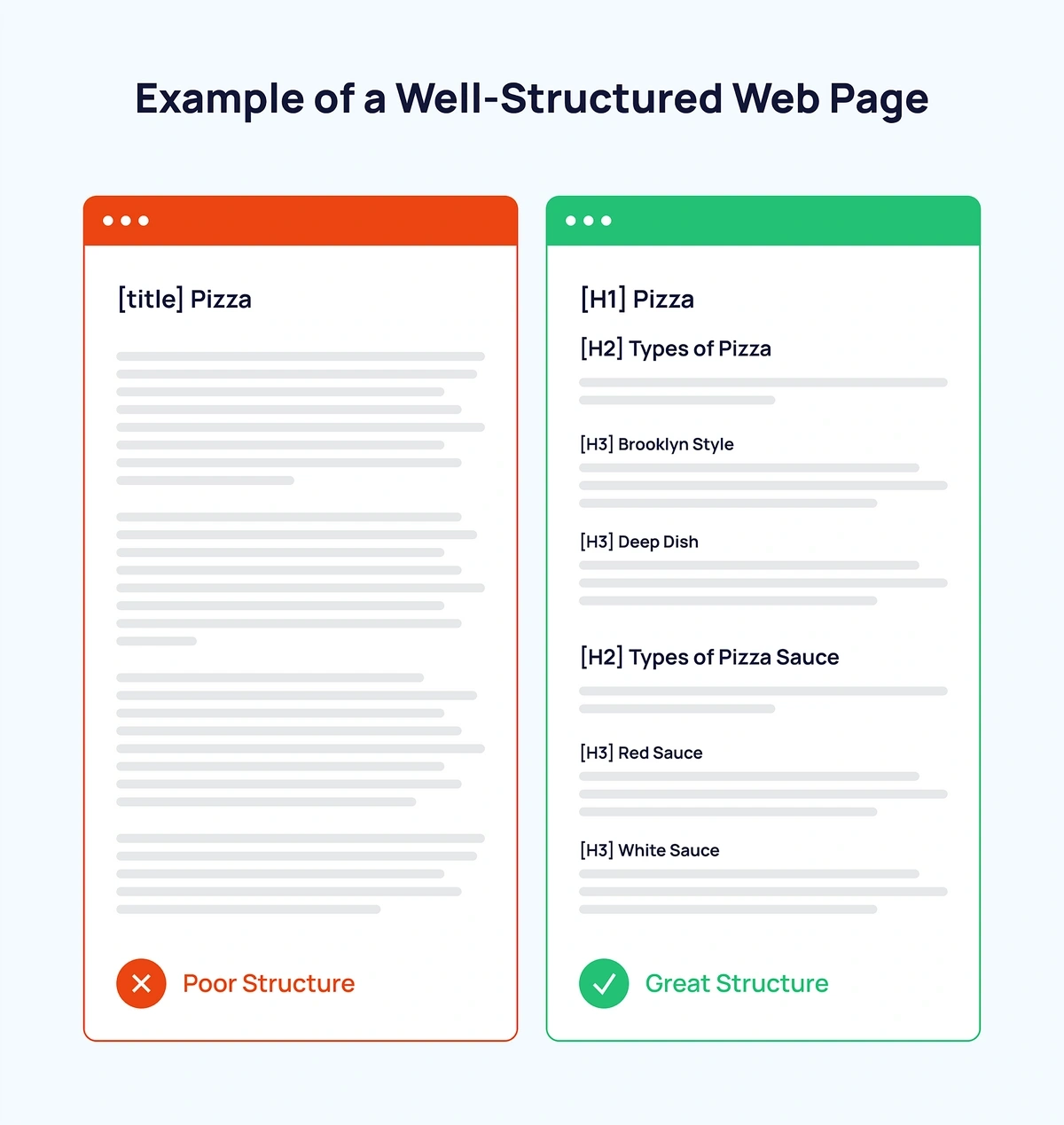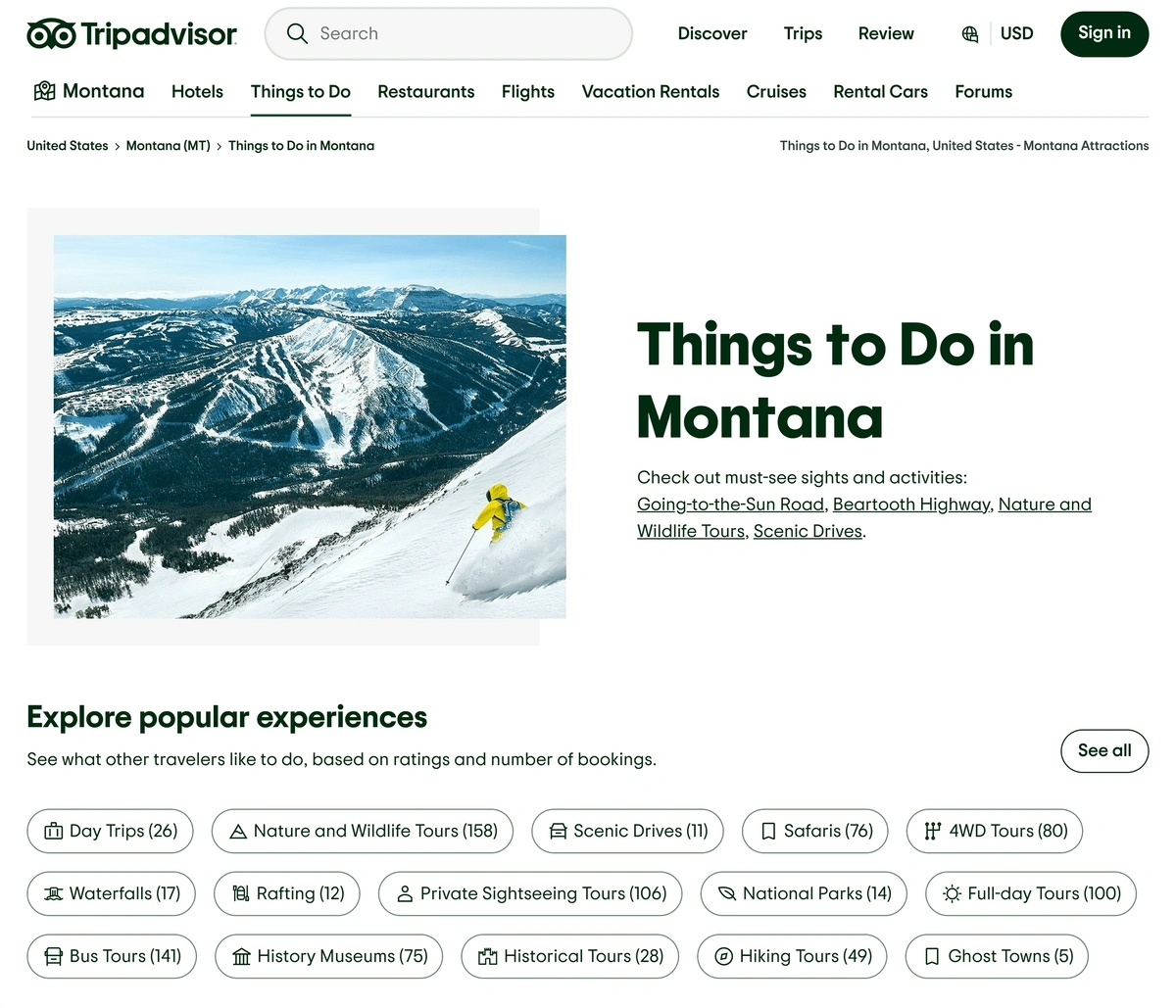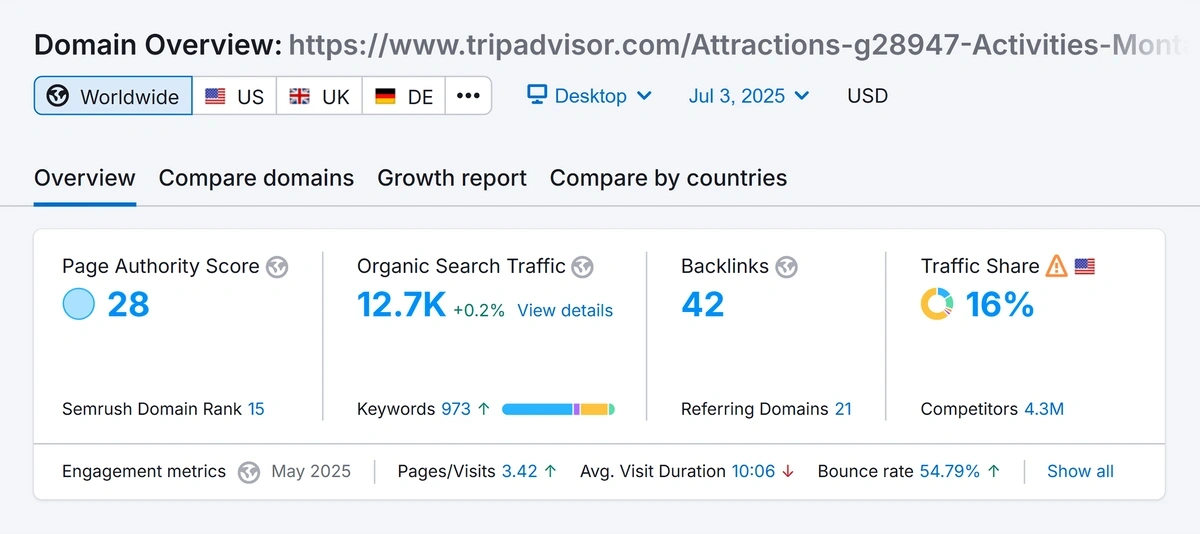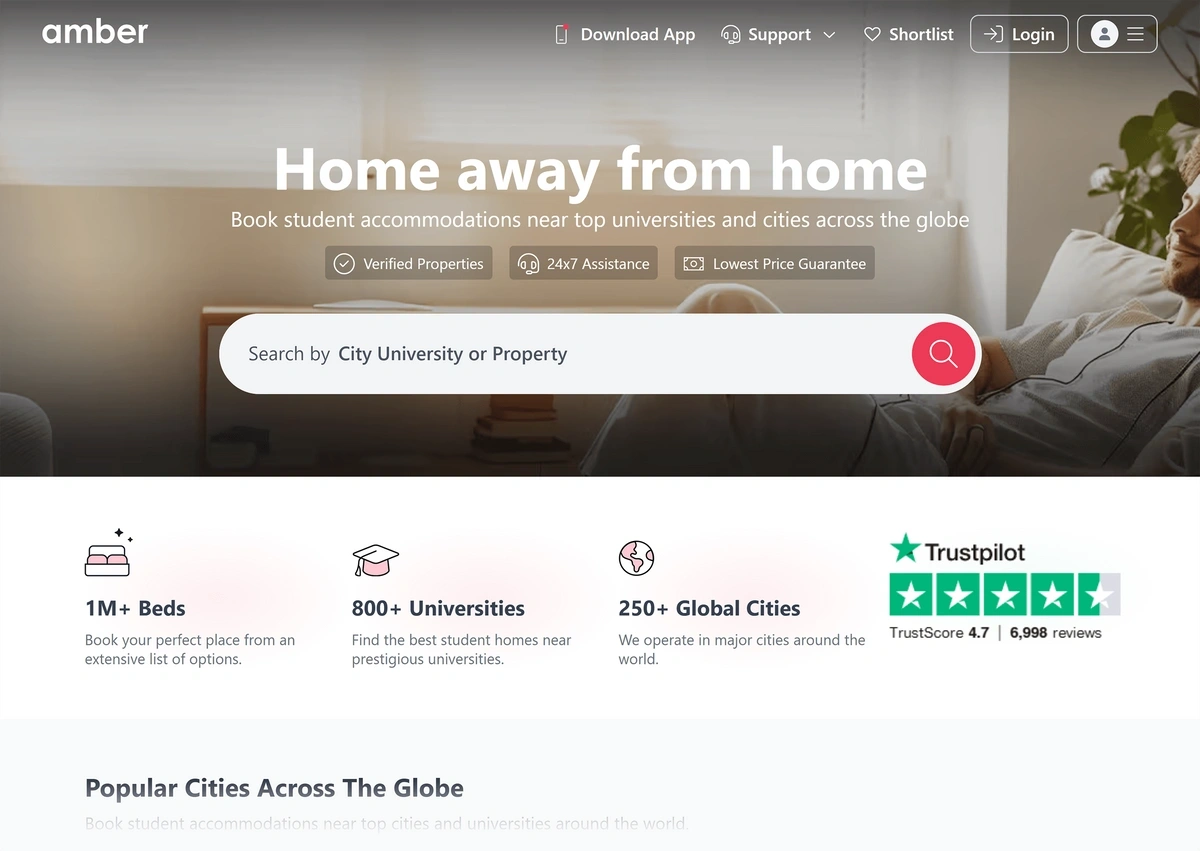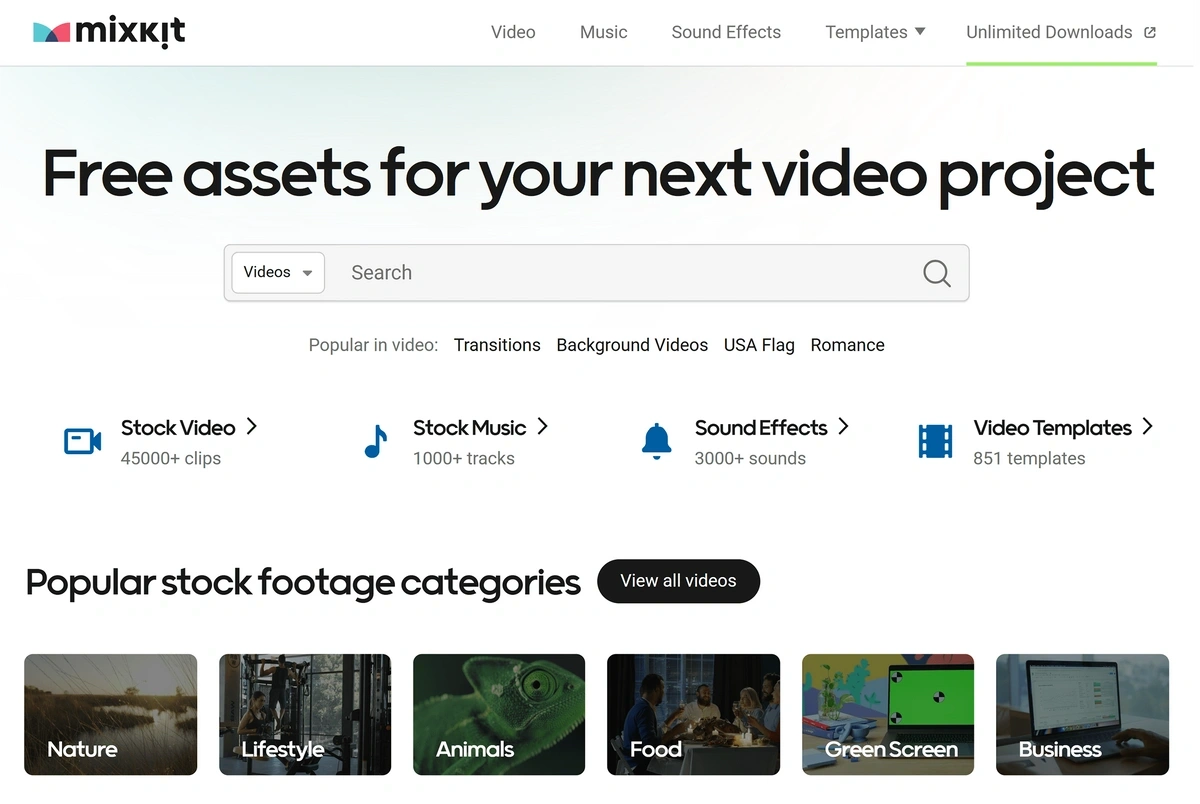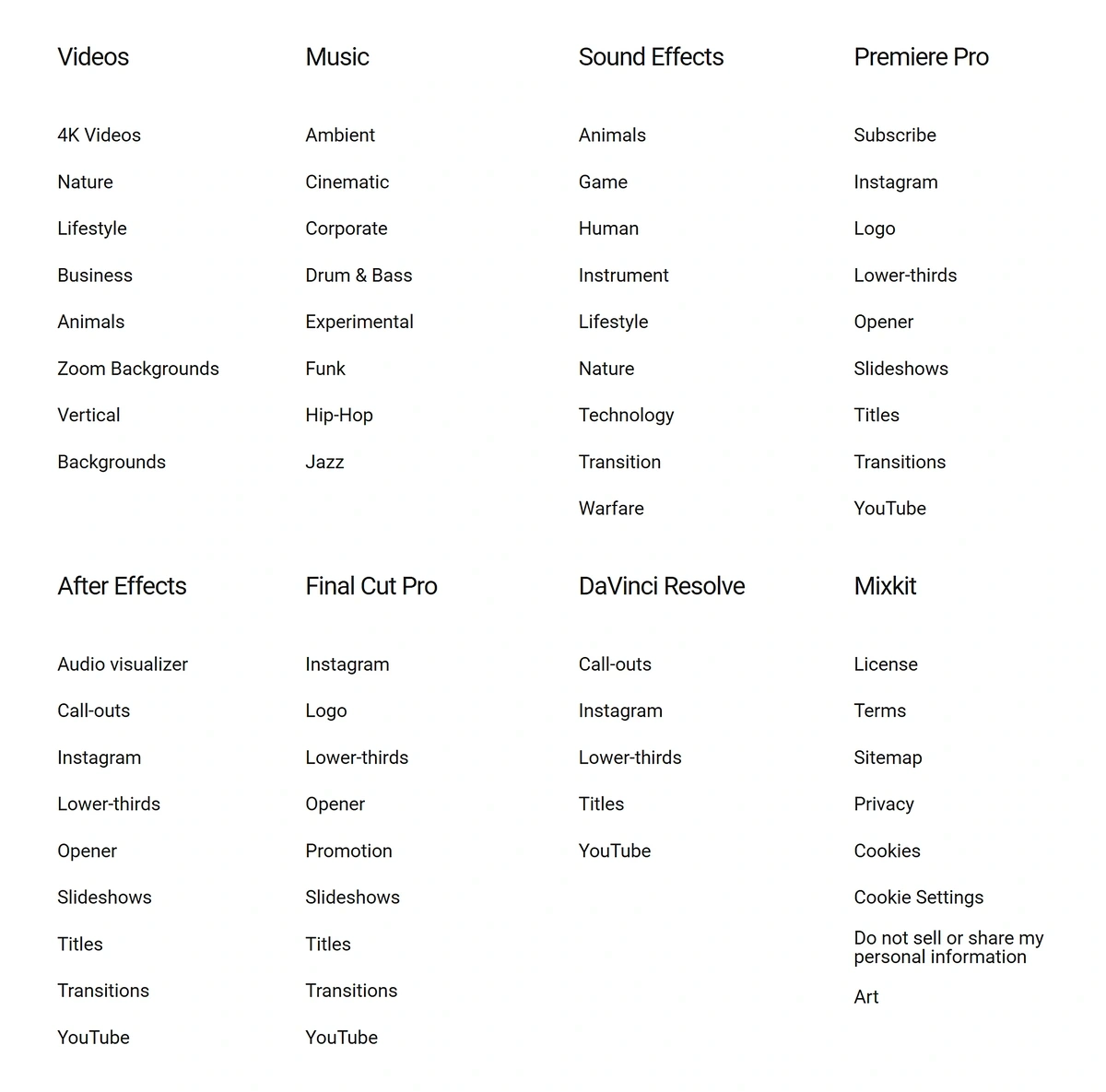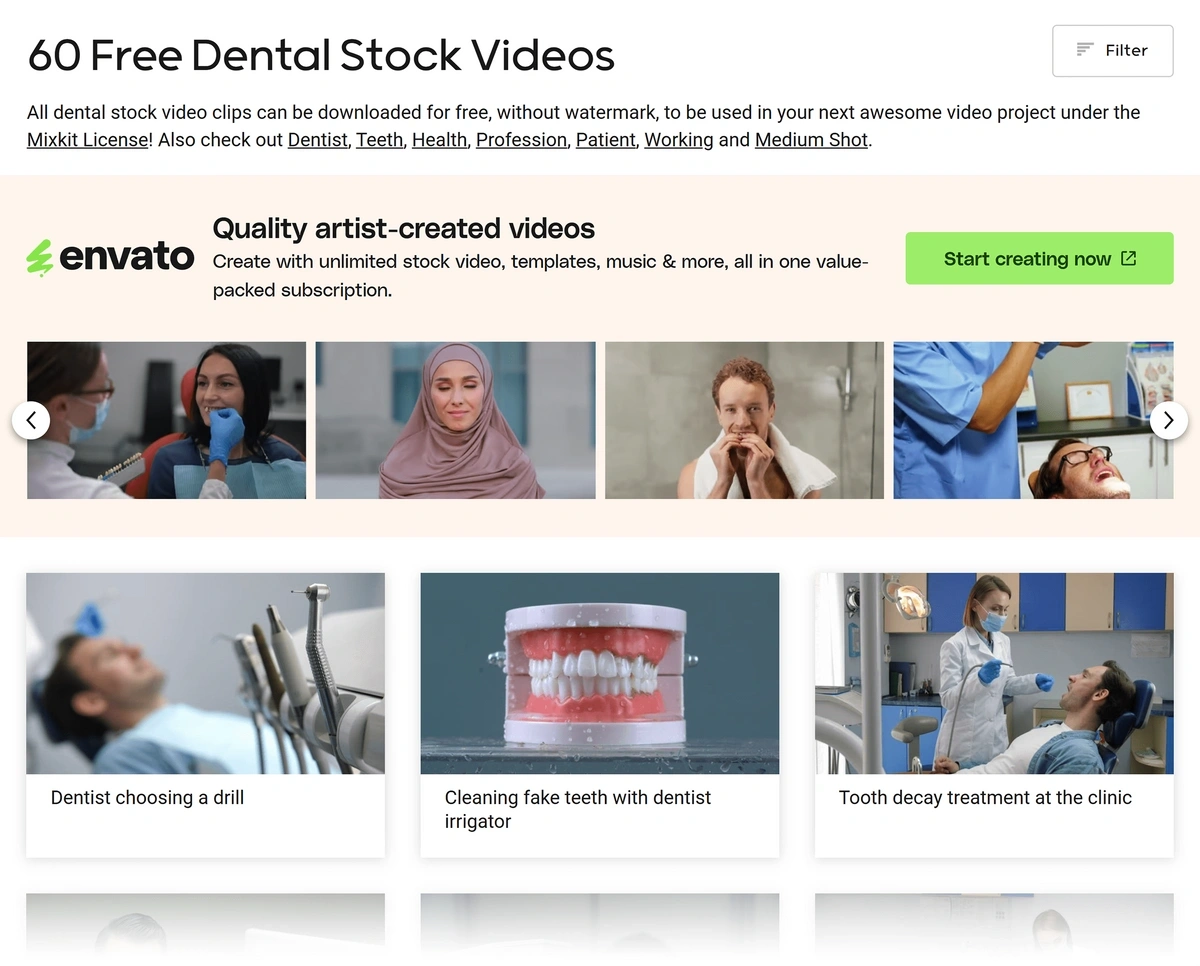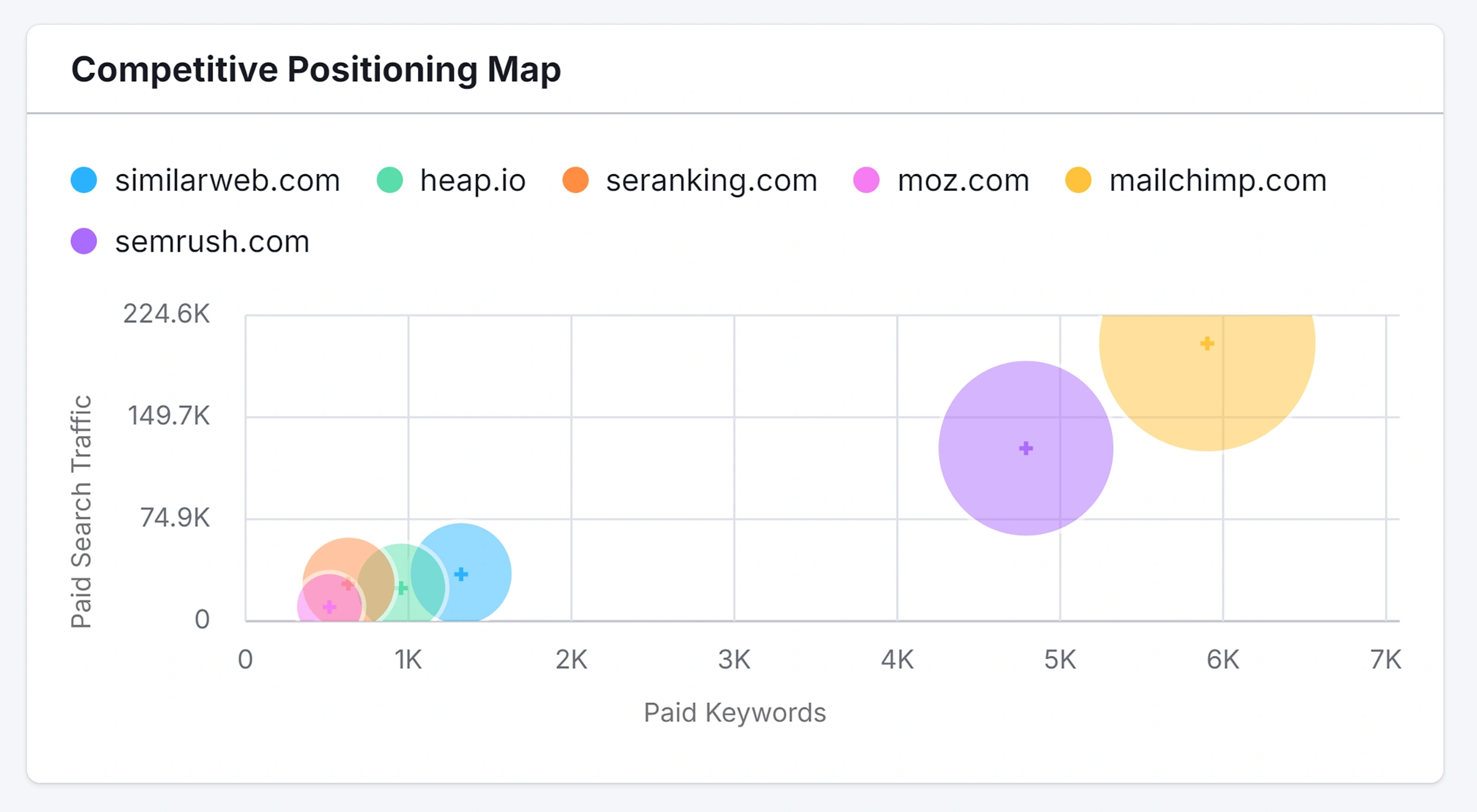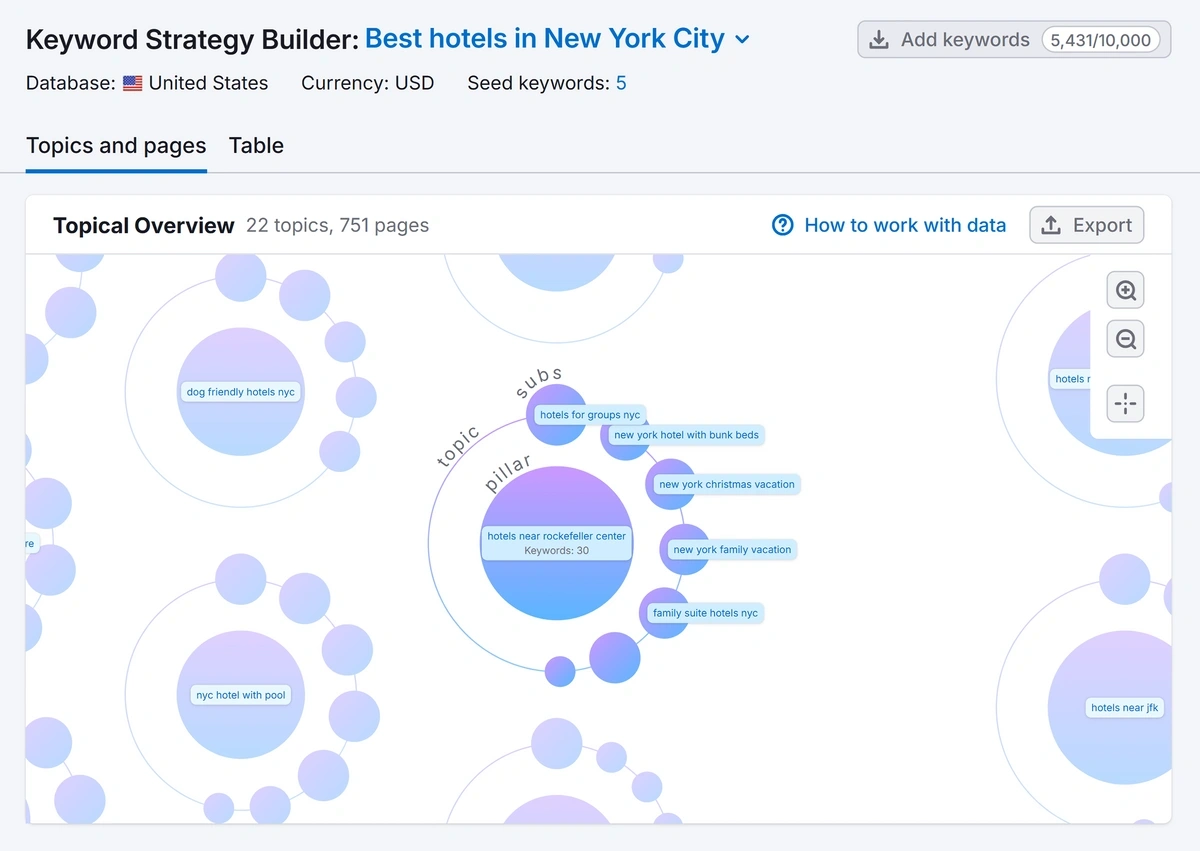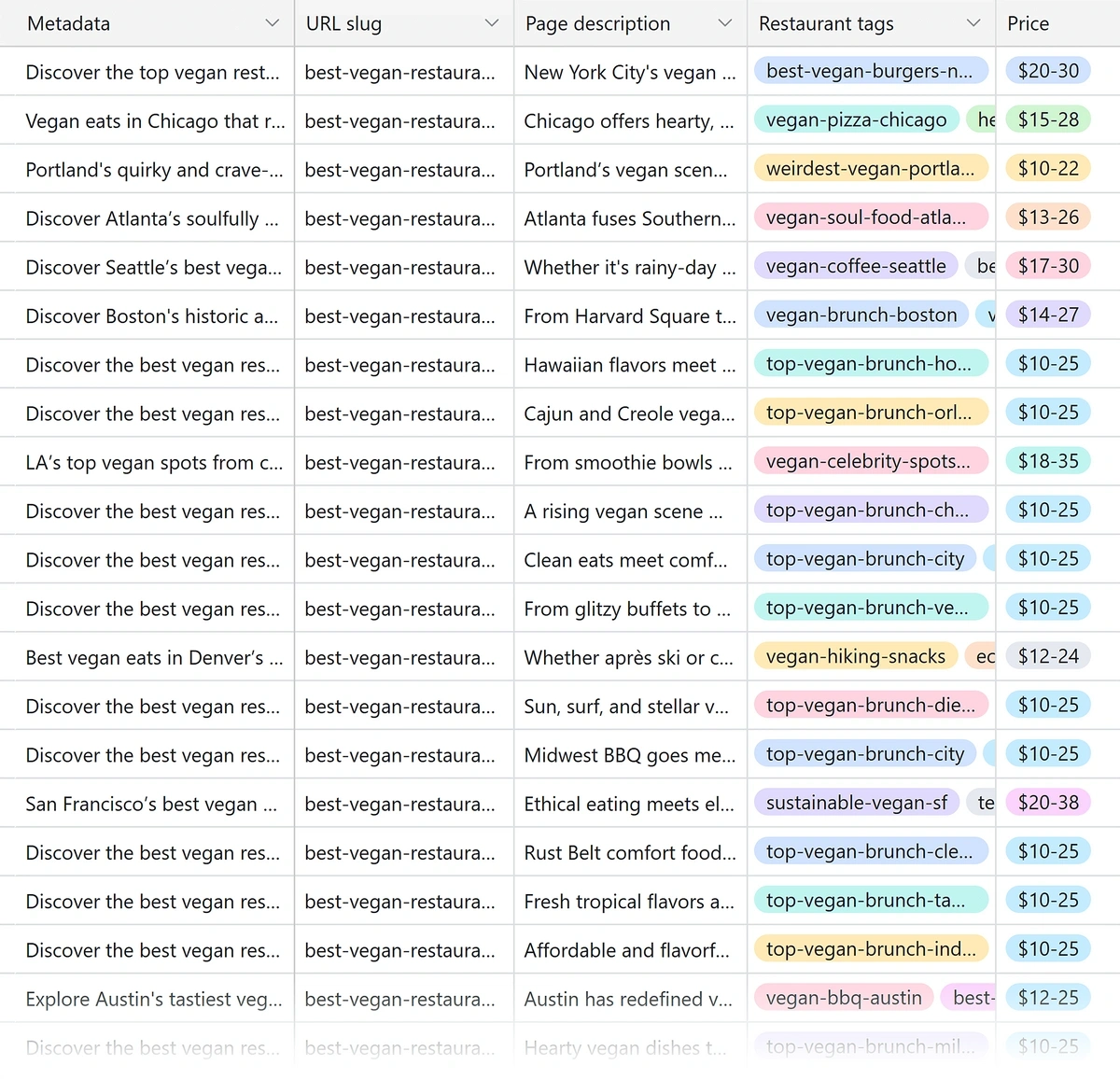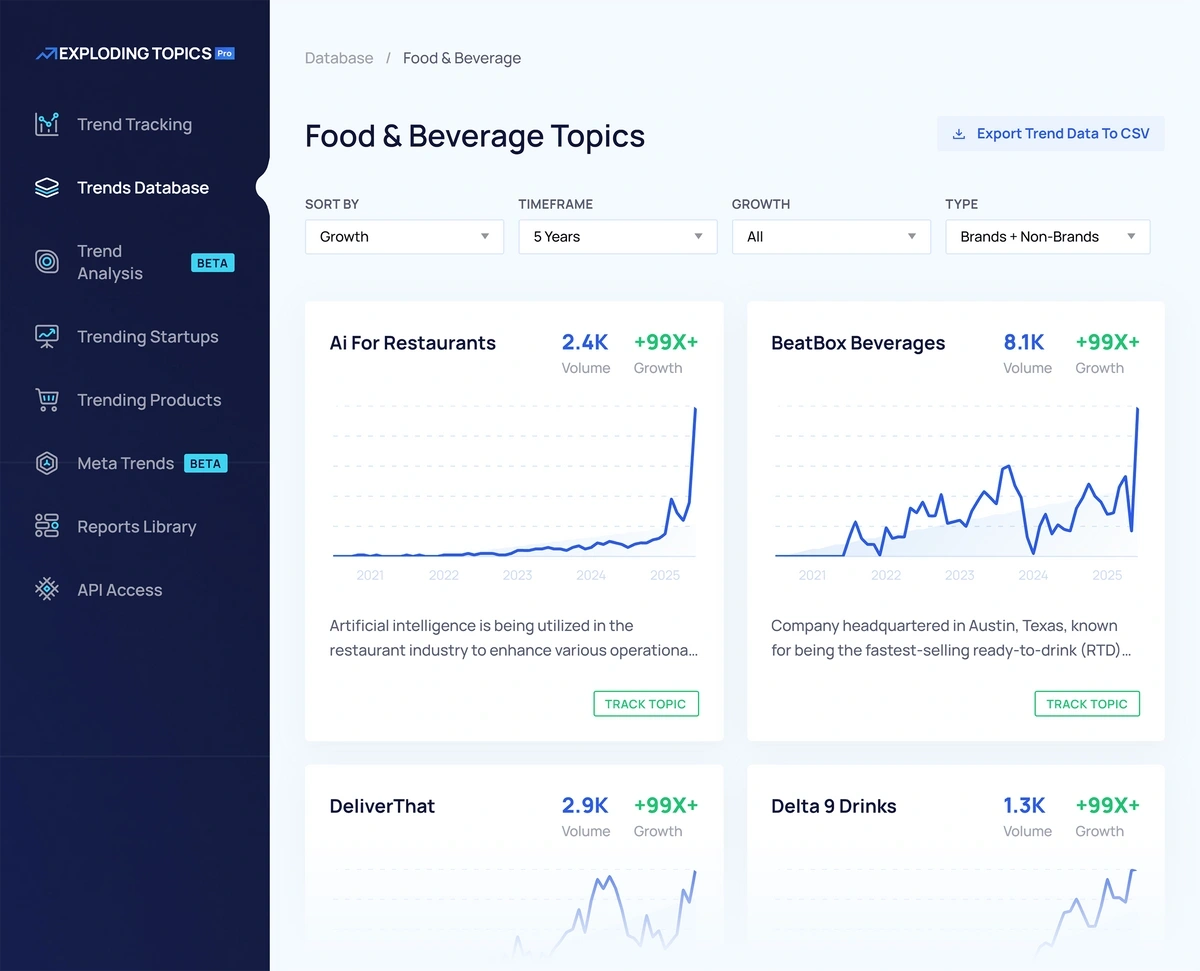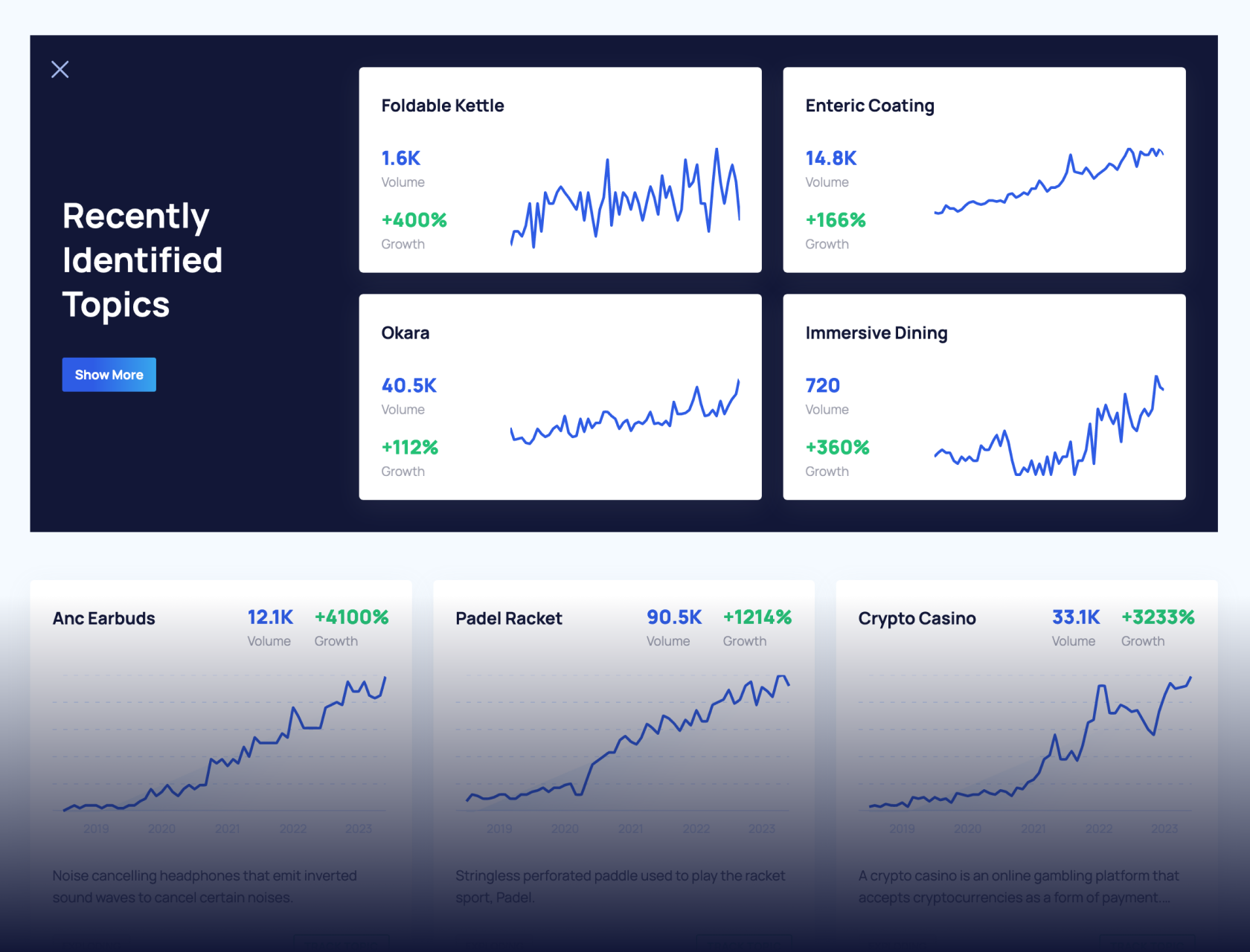
A Beginner’s Guide to Programmatic SEO (2025)
Programmatic search engine optimization (SEO) isn’t just a matter of generating some content with AI and publishing it to your site.
A true programmatic SEO plan requires:
- A deep understanding of your target audience
- Rich keyword and internal data
- Page templates that don’t feel like carbon copies of each other
I talked to five programmatic SEO experts to share their tips for how you can best approach this strategy in 2025—and when it might be OK to use AI in the process.
What is Programmatic SEO?
Programmatic SEO is the process of automatically creating webpages based around a keyword or search query. If you've ever searched for information and wound up on a site like Yelp or HotelTonight, you've seen programmatic SEO in action.
How Does Programmatic SEO Work?
At a high level, programmatic SEO is a four-stage process:
- Website owners and marketers identify keywords on a large scale
- Designers create templates for content generation
- Select tools are used to automate content creation and publishing
- Work continues with dynamic content optimization
While marketing automation is indeed a big part of programmatic SEO, there’s still a need for human involvement.
“To succeed today, programmatic SEO needs high-quality templated content that meets user intent, strong editorial oversight that’s not just AI driven, integration of user generated content (UGC), and continuous monitoring and iteration,” said Emina Demiri-Watson, Head of Digital Marketing at Vixen Digital.
Build a winning strategy
Get a complete view of your competitors to anticipate trends and lead your market
Programmatic SEO vs. Traditional SEO
Traditional SEO is a manual process; programmatic SEO is automated. That doesn’t mean that a programmatic SEO strategy is hands-off and human-free, though. It’s important that human marketers carefully plan their programmatic strategy, build page templates, and review data—then adjust their technique as needed.
But because programmatic SEO streamlines the process of creating and publishing a webpage, you can create far more landing pages than you could when taking a manual traditional SEO approach.
When Should You Use Programmatic SEO?
“Programmatic SEO is good for creating things like travel listings, location-based pages, and other templates that aren’t necessarily unique content targeting specific questions,” said Stephanie Long, founder of Mrs. SEO.
A programmatic approach to SEO is also common in e-commerce—just think of all the different product searches you could run to find something on Amazon.
I’ve worked with a few e-commerce companies over the years. It typically wasn’t feasible for a team of marketers to manually create high-quality content and landing pages for every possible product combination and category.
Instead, we reserved our manual efforts for high-traffic, high-conversion, high-value searches … and used a programmatic approach for others. This way, we could reach every searcher, no matter the specific search query they used. (Assuming, of course, that the search was still relevant to the website’s business—there’s no point in creating programmatic pages for, say, running shoes if you sell bookkeeping software.)
When to Avoid Programmatic SEO
It’s important to note, though, that programmatic SEO will only work—regardless of industry and page topic—if your site is well structured. An attempt to layer programmatic SEO on top of a cluttered sitemap or poor user experience will fall flat.
“One thing that’s non-negotiable is strong information architecture,” said e-commerce consultant Nikita Agarwal. “Programmatic SEO is effective when your site is built around a clear taxonomy, such as categories and subcategories with consistent page templates.”
Tip: If you’re not confident in your site’s structure, back up and begin with a complete site audit to address any issues before delving into programmatic SEO.
Benefits and Risks of Programmatic SEO
When implemented correctly, programmatic SEO can help you:
- Capture a high volume of organic traffic
- Rank highly in more search engine results pages (SERPs)
- Quickly leverage data points from your website or trend spotting tools and respond to industry shifts
- Improve your SEO strategy and results in an inexpensive way
- Rapidly scale your webpage and content production capabilities
- Increase conversions on long-tail keywords
If you choose your programmatic keywords correctly, it'll be OK that these pages are templated and not long, detail-rich guides to a given topic. It's not necessary to write "complete guides to" every topic under the sun—and certainly not things like "best ice cream shops in Louisville, Kentucky" or "free Canva templates for Instagram Reels."
Similarly, it wouldn't make sense for you to google "SEO tips" and land on this page only to find it full of auto-generated product descriptions.
But if you rely too heavily on automation, or don’t invest in engaging and valuable page templates, you could wind up hurting your site’s standing in SERPs.
“Google's gotten scary good at detecting template-based content, and I'm seeing sites get obliterated for what used to be standard programmatic approaches. Google's 2025 updates demand a dual focus: immediate technical compliance and long-term innovation,” said Sai Deshmukh, Director of Organic Growth at Amber.
“The biggest trap I see people falling into is launching thousands of pages simultaneously—Google's pattern detection now flags mass content dumps as manipulation attempts within days," she said.
Like many aspects of SEO, programmatic strategies require balance, care, and attention to detail for long-term success.
“The 'spray and pray' approach is no longer viable and shouldn't have been in the first place," said Dimiri-Watson. "In a nutshell, you should watch out for repetitive thin content, no editorial oversight, aggressive publishing velocity, and ignoring user intent."
Examples of Programmatic SEO
These three companies are great examples of how programmatic SEO can look and work when serving different audiences.
TripAdvisor
Travel sites like TripAdvisor rely heavily on programmatic SEO. And it works well—they’re able to offer landing pages for nearly any location, with flights, accommodations, bookable and excursions automatically listed by price or customer review.
Just look at how much traffic flows to this one programmatic page about activities in Montana:
Takeaway: Most people searching for activities or hotels in a specific location aren’t interested in reading a long blog post or lots of page copy about why they should go to said spot. They’ve already made up their mind to go—the real value is in a page’s ability to deliver options and pricing in a clear way. This is why programmatic SEO works well for travel sites.
Amber
Deshmukh’s company, Amber, helps international students book long-term housing near their university. Because Amber needs to reach millions of students searching around the world, they use programmatic SEO to match queries about specific locations, housing types, and price.
“Instead of scraping one real estate database to create ‘homes for sale in [city]” pages, I combined property data, local crime statistics, school district performance metrics, commute time APIs, and local business density data,” said Deshmukh. “The result is hyper-specific pages ranking in the top three spots for searches I never would’ve discovered manually.”
"My secret sauce is combining the database power of Airtable with my Python scripts that call multiple APIs at once," she said. "This allows me to identify the data intersections that yield high-converting micro-niches.
Takeaway: It’s impossible for any marketer to predict exactly what every searcher’s housing preference and budget will be. As with the travel industry, programmatic SEO makes sense in real estate—a programmatic list of options that meet a searcher’s parameters provide more value than a traditional landing page or blog post would.
Mixkit
You can create templated pages to sell templates, too.
Look at Mixkit as an example. When you go to the Mixkit site, you can see that they’ve manually created category pages for the top types of templates they provide:
But if you do a Google search for other kinds of templates, Mixkit still comes up near the top of the SERP with a relevant page.
These programmatic pages all follow a similar format:
- Page title: [NUMBER] of [KEYWORD]
- Short descriptive text: Includes related categories that change depending on page topic
- Embedded premium content content that relates to the search query
- Free Mixkit content with thumbnail previews
How to Set Up Programmatic SEO
Research Your Niche
You need a good grasp on your corner of the market to launch an effective programmatic SEO campaign. This isn’t something you can simply take a stab at and hope it works—the process requires subject matter expertise and data … lots and lots of data.
Make sure you understand:
- What your target audience wants to find online
- Where and how they’re searching for this information (programmatic SEO techniques work best for creating things like landing pages, not YouTube videos)
- Who your competitors are
- How your competitors are currently capturing SERP traffic
A good keyword research tool that includes competitive positioning maps will help to make your research process easier.
Tip: This is a spot where you can potentially use AI, though it’s entirely optional. As you narrow down your audience’s interests, try using a tool like Claude to generate lists of related topics or questions. AI tools can hallucinate (i.e. produce inaccuracies) and may be pulling information from outdated training data—but if you’re stuck, sometimes a quick AI chat can help to spark ideas.
Find Keywords and Identify Search Intent
Once you have a good understanding of who your target customer is and what they want, it’s time to drill down deeper into specific keywords.
It’s a good idea to use a mix of data in this part of your process—both the broadly available keyword data you can get from a tool like Semrush or Ahrefs as well as metrics directly related to your site. The latter can include:
- Traffic reports from a tool like Google Analytics
- Search queries that lead to site impressions as reported by Google Search Console
- Search ranking reports that you previously set up in your SEO tool of choice
- Back end analysis of popular products and pages on your site
After choosing keywords from various sources, plug them into an SEO tool that shows you related keywords and questions. (The Semrush Keyword Magic Tool and AlsoAsked are both useful at this point in the programmatic SEO process.)
Don’t be afraid to focus on long-tail keywords just because the have a low search volume. Unlike traditional SEO, which typically targets keywords that have high organic search volume and low competition, programmatic SEO is a good time to go after highly relevant keywords with low search traffic and high conversion potential.
Tip: Once you’ve gathered a list of keywords to target with programmatic pages, use a tool like the Semrush Keyword Strategy Builder to automatically group your topics into clusters.
Create Page Templates
Next, you need to prepare a variety of carefully designed page templates. These templates need to align with search intent—and can't be too similar.
These pages should adhere to standard content marketing and SEO best practices. Make sure you have spots for:
- A relevant title
- Internal links
- External backlinks where appropriate
- Images
- Light page content
Our expert contributors highlighted three other things that you should focus on when building effective programmatic SEO pages, too:
1. Interactive elements
“You can’t compromise on quality or uniqueness. Swapping out a few variables isn’t enough to rank anymore,” said Agarwal. Google is getting much better at detecting thin, overly templated content. One effective way to stand out is by making your programmatic pages interactive and engaging … it could be as simple as adding a poll or a voting feature. It boosts engagement, sets you apart from competitors, and signals to Google that your site is user-focused.”
2. E-commerce UGC
“If we think of programmatic SEO in the traditional way, then there is no benefit. But if you power your programmatic pages with UGC, then there’s certainly benefit there,” Demiri-Watson said. “That benefit is in the ability to scale authentic, intent-aligned content with quality UGC input. And today AI makes it so much easier to gather real user input like reviews, questions and answers, forum threads, and social proof.”
3. Data visualization and presentation
“Your data will be scraped, analyzed, and enriched by competitors using AI,” said Mykhailo Shcherbachov, Chief Marketing Officer at Collaborator. “To prevent this, you need to make the process of scraping and extracting data more difficult or use a unique type of visualization.”
Shcherbachov recommends structuring page templates in a way that makes data insights stand out while being hard to copy.
Collect Data
At this point, you've picked the keywords you want to target and set up some page templates. Now it's time to gather the data that will go on those pages. This can be a mix of information from internal and external sources, including:
- Your product inventory
- Weather data APIs
- Public datasets
- Scraped web data
Deshmukh says the key to success is to focus on data depth, not just data breadth.
“Everyone’s still thinking about programmatic SEO as ‘create 10,000 pages from one dataset.’ That’s dead,” said Deshmukh. “What’s crushing it for me right now is what I call data layer stacking—taking three or four completely different data sources and finding their intersection points.”
This layer stacking allows Deshmukh to deliver results on SERPs she’s never even seen before.
“It lets me create pages for searches like ‘three-bedroom homes under $400,000 in low-crime neighborhoods with top-rated schools and under 25-minute commute to downtown Austin tech companies’,” she said. “(And) they’re converting at eight times the rate of traditional real estate landing pages.”
Tip: If you're collecting data from multiple sources—especially when this includes scraped or synthetic data—you need to clean it before use.
When you clean data, you spot and fix or remove any errors. This could be anything from a typo (a capital letter O instead of a zero, for example) to complete inaccuracies. If you're going to generate pages about "The Best Hotels in Paris, France" you don't want to find that you've accidentally included hotels in Paris, Texas in the mix.
Build Databases
After collecting and cleaning your data, you need to put it into a database. You'll want to make sure that your database includes data for each element on your page template.
This could include:
- Metadata
- URL slugs
- Product descriptions
- Related products
- Price
- Location
- User reviews
- UGC
Depending on how your content management system (CMS) works, you may need to build this database with the help of a developer or use a no-code tool like Airtable and a website plugin.
Generate Webpages
Once you have your keywords, internal data, and page templates lined up, you need to flip the switch on automated page creation. This doesn’t mean sending AI-generated blog posts to your site in the hundreds.
“Relying too much on AI tools can cause duplicate content and lack of unique data. If everyone’s pulling from AI tools—and AI only has so much knowledge to share—you’re more than likely going to have the same or very similar content as others,” said Long. “And because programmatic SEO entails generating large amounts of data, you could lack depth to your content and not show up in search results.”
Shcherbachov agrees.
"I'd use AI to generate back end data that we can showcase on the pages," he said. "It's best not to use (AI) directly for generating content that appears on the front end."
Instead, make sure that your database fields map to the specific parts of your page template.
For example, if you want to automatically generate pages comparing the top two hotels in a given location, you'll need to create a template that contains the following:
| Hotel 1 Name | Hotel 2 Name |
| Hotel 1 Photo | Hotel 2 Photo |
| Current Weather (via API) | Current Weather (via API) |
| Hotel 1 Average Rating | Hotel 2 Average Rating |
| Hotel 1 Average Price | Hotel 2 Average Price |
| Hotel 1 Featured Review | Hotel 2 Featured Review |
You'll then need to make sure that your database contains all of this information and is correctly connected to your site. If so, your pages will generate perfectly whether someone's searching for a hotel in Winnipeg or Beijing.
Tip: If you want to include text—like a category description—on your programmatic pages, you can do this by either including small blocks of text in your database or putting boilerplate text on your template and mapping parts of the text to database information.
This way, a short placeholder sentence like "We've researched the best [ITEM] in [LOCATION] for [USER]" could programmatically turn into "We've researched the best hotels in Minneapolis for business travelers" or "We've researched the best restaurants in Orlando, Florida for vegans."
Optimize Landing Pages
Programmatic SEO isn't a set-it-and-forget-it process. Make sure you're collecting page analytics, along with creating a position tracking report for your target keywords. You can use any of the tracking tools already available to you for this—there's no need to buy a specific programmatic SEO tracking tool.
"My custom tracking dashboard in Notion tells me which pages drive the most traffic and which ones don't," said Deshmukh, explaining her system for tracking real user behavior.
Whether you use Notion, a Google sheet, or an analytics report builder, keep an eye out for the following and make corrections as needed:
| No Traffic | Make sure that your programmatic pages are accessible to search engine crawlers, and if so, consider eliminating pages with no or very little traffic from your programmatic process. |
| Low Traffic, High Bounce Rate | This means that the audience for your page is small and the page isn't aligned with their search intent. This page may not be worth much, so consider axing it from your strategy. |
| High Traffic, High Bounce Rate | If you're seeing lots of visitors but they aren't staying on your page, your content isn't aligned with the correct search intent or funnel stage. Rework the page template and programmatic variables, then try again. |
| High Traffic, Low Conversion Rate | This can indicate that your page is targeting the right keyword and search intent, but your programmatic template isn't encouraging a conversion. Try reworking your template—a heat mapping tool can show you where people are leaving the page. A manual page redesign and rewrite may be in order, too. |
| Low Traffic, High Conversion Rate | Low traffic can be OK in programmatic SEO—if you're capturing conversions from most of your visitors, then that's great. |
| High Traffic, High Conversion Rate | A high traffic, high conversion page could be a signal that it's time to manually build out this page with additional content and customizations for your audience. It's not required, though—if you're seeing high traffic and conversions across 100 programmatic pages on the same topic (i.e. Best Restaurants in X Town), it's totally fine to leave things as they are. |
Automation Tools and Resources for Programmatic SEO
You don't need a big and fancy tech stack to pull off programmatic SEO successfully. The only items you must have access to are a CMS with page templates and an information database.
"The main tools are still your brain and a bit of empathy for the user," said Shcherbachov. "Without common sense and a real understanding of what your pages should bring to the table, it's just noise."
That said, building out your tech stack with select tools can make your work more efficient—and fun. A good competitive research tool and SEO platform will inform your research, and various AI tools can make the process of compiling and cleaning data easier.
Our contributors each called out different tools that they feel are critical to the programmatic SEO process—check these out and see how they can enhance your workflow:
- Shcherbachov recommends Moqups for prototyping your page templates
- Long and Demiri-Watson use Semrush to plan out programmatic SEO strategy
- Deshmukh uses Screaming Frog and the Google Search Console API to reverse-engineer successful programmatic sites and find content gaps—then uses Airtable and Webflow to create her pages
- Agarwal relies on AI tools to automate the process of previewing page templates
I'd like to add one more to this list: Exploding Topics. If you're completely starting from scratch and just beginning to plan your programmatic SEO strategy, a trend tracking tool is a good place to start.
With access to Exploding Topics, you can quickly see the top trends in your industry, figure out which topics generate web searches (vs. social media chatter), and even start researching competitors. Give it a try yourself—your first seven days of Exploding Topics Pro are free.
Stop Guessing, Start Growing 🚀
Use real-time topic data to create content that resonates and brings results.
Exploding Topics is owned by Semrush. Our mission is to provide accurate data and expert insights on emerging trends. Unless otherwise noted, this page’s content was written by either an employee or a paid contractor of Semrush Inc.
Share
Newsletter Signup
By clicking “Subscribe” you agree to Semrush Privacy Policy and consent to Semrush using your contact data for newsletter purposes
Written By


Emily is a freelance content writer at Exploding Topics. A former news correspondent, she has over 15 years' experience creati... Read more

